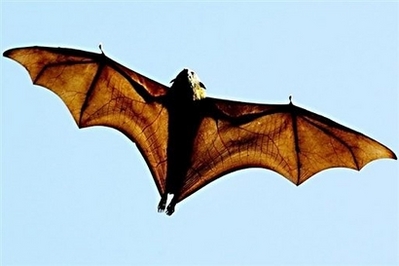

Famous Cases | Historical Tales | Vampires | Zombies
 |  |
Famous Cases | Historical Tales | Vampires | Zombies |
Next Plague Likeliest To Emerge From Poor Tropical Countries
 |
| HVV Carrier: The bat. |
Presenting the first-ever map of "hotspots" of new infectious diseases, they predict that the next pandemic is likeliest to come out of poor tropical countries, where burgeoning human populations come into contact with wildlife.
A three-year investigation led by four major institutions tracked 335 incidents since 1940 when a new infectious disease emerged.
The category includes HIV/AIDS, which has slain or infected more than 65 million people around the world, and outbreaks of severe acute respiratory syndrome (SARS) and H5N1 bird flu, which have cost tens of billions of dollars to contain.
The emergence of new diseases have roughly quadrupled over the past 50 years, says the study, appearing in the British journal Nature.
Sixty percent of them are so-called zoonoses, or diseases that have been transmitted from animals to humans.
Most zoonoses come from wild animals, especially mammals, which are the most closely related species to humans. Novel pathogens that adapt to humans can be extremely lethal, as we have no resistance to them.
New zoonoses include AIDS, which is believed to have jumped from chimpanzees to humans, possibly through hunters who killed and butchered apes; SARS, whose natural reservoir is Chinese bats; and the Ebola virus, which holes up in three species of African fruit bat and infects animal primates and humans.
"We are crowding wildlife into ever-smaller areas, and human population is increasing," said co-author Marc Levy of the Center for International Earth Science Information Network, affiliated to Columbia University's Earth Institute in New York.
"Where those two things meet, that is a recipe for something crossing over."
Areas that present the biggest potential source for a new zoonose are "the whole of the East Asia region, the Indian sub-continent, the Niger delta (and) the Great Lakes region in Africa," he said in a teleconference with reporters.
Some wild zoonoses end up infecting humans through an intermediary path, via livestock, such as the Nipah virus, which emerged in Malaysia, or via poultry, such as bird flu.
More than 20 percent of emerging infectious diseases derive from a growing imperviousness to drugs, such as extremely drug-resistant tuberculosis (XDR-TB), chloroquine-resistant malaria and verocytotoxigenic Escherichia coli, a highly dangerous strain of intestinal bug.
Many of these outbreaks have occurred in Western Europe or North America.
A spike in new infectious diseases occurred in the 1980s, probably because the AIDS pandemic unleashed a range of other new diseases, the authors believe.
El Nino weather patterns in the 1990s may also have helped spread mosquito-borne diseases, according to the study, amplifying concern voiced last year by the UN's Intergovernmental Panel on Climate Change (IPCC) that global warming would spread such dangers.
The research is based on an exhaustive trawl through medical literature to identify new infectious diseases, which were then correlated with global patterns in human population density, changes in population, latitude, rainfall and wildlife biodiversity.
"Our hotspots map show that the next new important zoonotic disease is likely to originate in the tropics, a region rich in wildlife species and under increasing pressure from people," said Peter Daszak, executive director of the Consortium for Conservation Medicine at Wildlife Trust, New York.
"The problem is, most of our resources are focused on the richer countries in the North that can afford surveillance."
Daszak said the priority should be to set up monitoring networks in developing countries that would identify a threat from the outset and circumscribe it, rather than let it spread like wildfire around the globe thanks to jet travel and trade.
"If we continue to ignore this important preventative measure, then human populations will continue to be at risk from pandemic diseases."